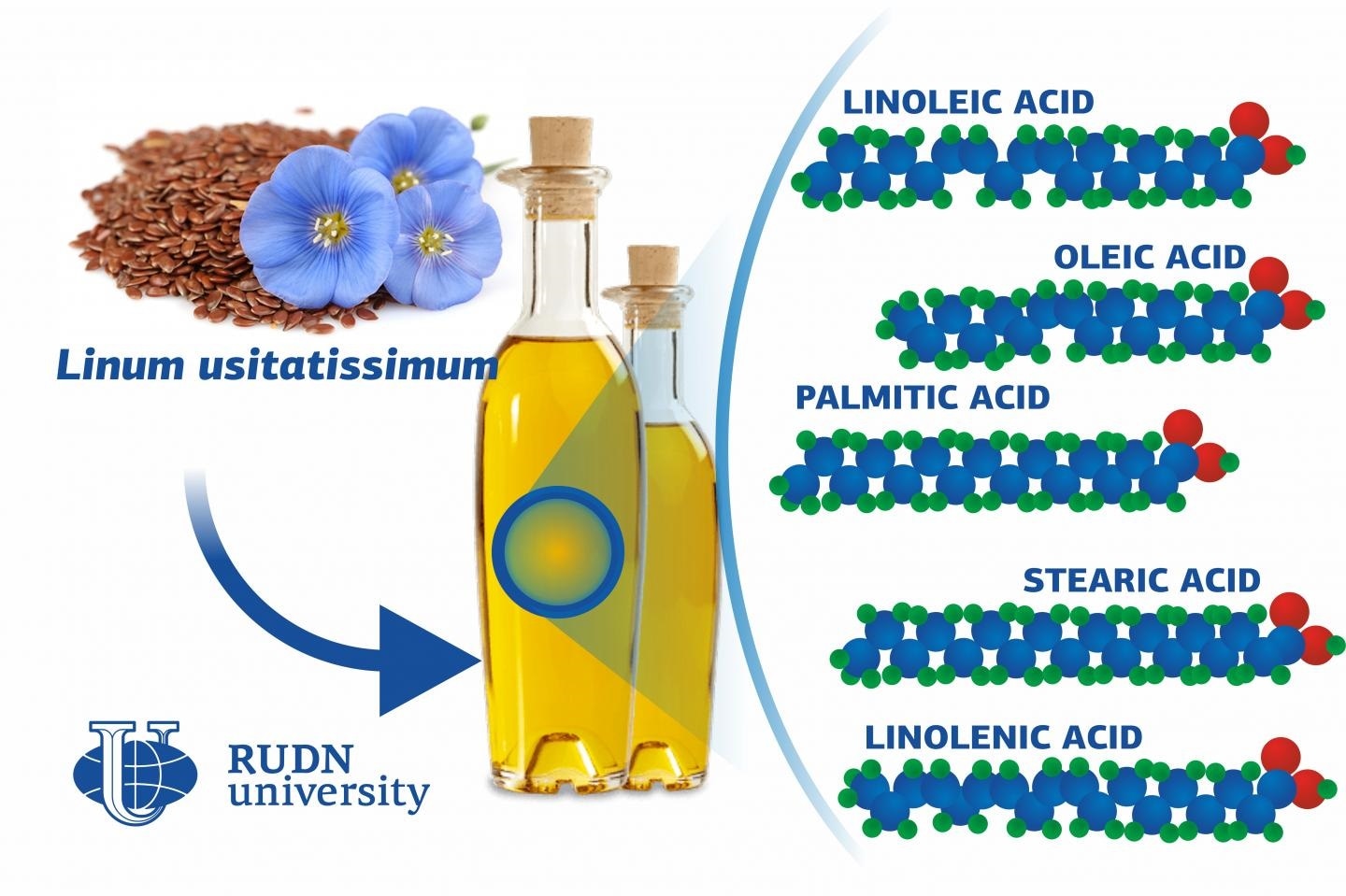RUDN University biologists, in association with their collaborators from the Institute of Molecular Biology of the Russian Academy of Sciences and the Institute of Flax, have analyzed the genes that establish the composition of fatty acids in flaxseed oil and detected polymorphisms in six of those genes.

Biologists from RUDN University working together with their colleagues from the Institute of Molecular Biology of the Russian Academy of Sciences and the Institute of Flax studied the genes that determine the fatty acid composition in flaxseed oil and identified polymorphisms in six of them. The team also found out what gene variations could extend the shelf life of flaxseed oil. This data can be used to improve the genetic selection of new flax breeds. Image Credit: RUDN University.
The researchers also discovered the kind of gene modifications that could increase the shelf life of flaxseed oil. This information can be applied to enhance the genetic selection of new breeds of flaxseeds. The results of the study were published in the BMC Plant Biology journal.
The common flax, also called Linum usitatissimum, has been known as an oil crop ever since the early Neolithic Age. The seeds of this flax are used for producing resins, paints, oil, biofuel, lacquers, linseed oil varnish, pet food, and linoleum, whereas its stocks are a source of fiber for sealing materials and textiles. Lines and breeds of flax vary by the content and composition of fatty acids.
The lines containing fewer than 5% of linolenic acid but a high content of linoleic acid are known for their longer shelf life, which is significant for the food sector. The production of fatty acids in flax is established by genes that are part of the FAD and SAD families.
A group of biologists, including specialists from RUDN University, employed deep DNA sequencing to examine the flax genome and demonstrated that both FAD and SAD genes and their polymorphisms directly influence the shelf life of flaxseed oil and the content of fatty acids in flax seeds.
We created a representative set of 84 flax breeds and lines with different fatty acid content in their oil. Using deep sequencing, we identified the sequences of six genes: SAD1, SAD2, FAD2A, FAD2B, FAD3A and FAD3B.”
Parfait Kezimana, Postgraduate Student, Agrarian and Technological Institute, RUDN University
The researchers examined the genetic material of a total of 50 flax germs from each line and breed to detect polymorphisms, enabling intraparietal heterogeneity. The researchers used the Illumina platform (MiSeq sequencer) with 400 coverage, and were able to precisely identify the gene sequence.
Depending on the content of fatty acids in flaxseed oil and different polymorphisms in the examined genes, the researchers identified which genes and their allelic variants established the amounts of specific acids.
All breeds except for one with low linolenic acid content exhibited a polymorphism that replaced the amino acid tryptophan in FAD3A with a stop codon and the amino acid histidine in FAD3B with tyrosine. Due to these mutations, the oil made from these flax breeds is better preserved and has a longer shelf life.
We have evaluated the polymorphisms of SAD and FAD genes in a set of flax breeds and lines with different oil compositions and identified the polymorphisms that determine the content of fatty acids in them. Our results could be used to develop markers for the genetic selection of new flax breeds. In the future, breeds could be certified based on their DNA sequences.”
Parfait Kezimana, Postgraduate Student, Agrarian and Technological Institute, RUDN University
Source:
Journal reference:
Dmitriev, A. A., et al. (2020) Genetic diversity of SAD and FAD genes responsible for the fatty acid composition in flax cultivars and lines. BMC Plant Biology. doi.org/10.1186/s12870-020-02499-w.